Ah, Singapore. The Lion City. Located one degree north of the equator and within the traveling haven of Southeast Asia, this tiny country has a lot more to offer than you might think. Singapore is filled with sights to see, things to do, neighborhoods to explore, and food to savor. It’s Southeast Asia’s most developed country, and with this development comes a lot of modern marvels (I mean what other country has a man-made waterfall within their airport) that somehow blend seamlessly with the multi-cultural touchstones that make Singapore such a dynamic city. This Singapore Travel Guide will make sure you have the best time on your travels to the country.
If you’re reading this Singapore Travel Guide, that means you’ve probably decided that you want to travel to this city-state. But before you sink your teeth into everything Singapore has to offer, you probably have a million questions about things like where you should stay, what you should see, or what food you should try, among others.
Well, look no further! I’ve structured this Singapore travel guide to be your ultimate travel companion. So whether you’re going for your first or your hundredth time, read on to find out how to go about planning your Singaporean escapade with this Singapore travel guide.
Subscribe to my Youtube channel @ Stephen Flores Travel, like me on Facebook at Passport Perspective, and follow me on Instagram / Twitter / Tiktok @StephenJFlores.
This post contains affiliate links. We receive a small commission for purchases made after clicking on these links at no extra cost to you.
Why You Should Visit Singapore
While Singapore is known for its diverse attraction lineup and delectable food scene, there are still some people out there who overlook the country. This is mostly due to the fact that it’s one of the more expensive countries to travel to. Prices for accommodations and attractions are usually significantly higher than what you would pay for in other countries. This gives people the impression that Singapore isn’t worth the money because in their minds its attractions and experiences simply don’t justify the high cost.
Well, I’m here to tell you that they are wrong. Singapore is one of the most exciting, unique, and enchanting destinations in Southeast Asia. I think what Singapore has to offer more than makes up for the amount of money you have to spend to visit. From world class museums such as the National Gallery and the National Museum, to beautiful green spaces like the Singapore Botanic Gardens and Gardens by the Bay, eclectic districts like Chinatown and Little India, and incredibly tasty (and affordable) food.
Singapore has something to offer everyone, whether you’re a solo traveler or a family of four, and it’s that kind of appeal, along with its multiculturalism and green initiatives, that make it such an attractive and unique city to visit. Besides, there are many ways you can save money on your Singapore trip to make it less expensive (I go into money saving tips later on in this post) which should make it easier on your wallet.
I advise you to give this city a chance, and hopefully this little intro was enough to convince you to go. If it was, then read on! I go into all my tips for visiting Singapore in this post, so I hope you find it helpful.
Singapore Visa
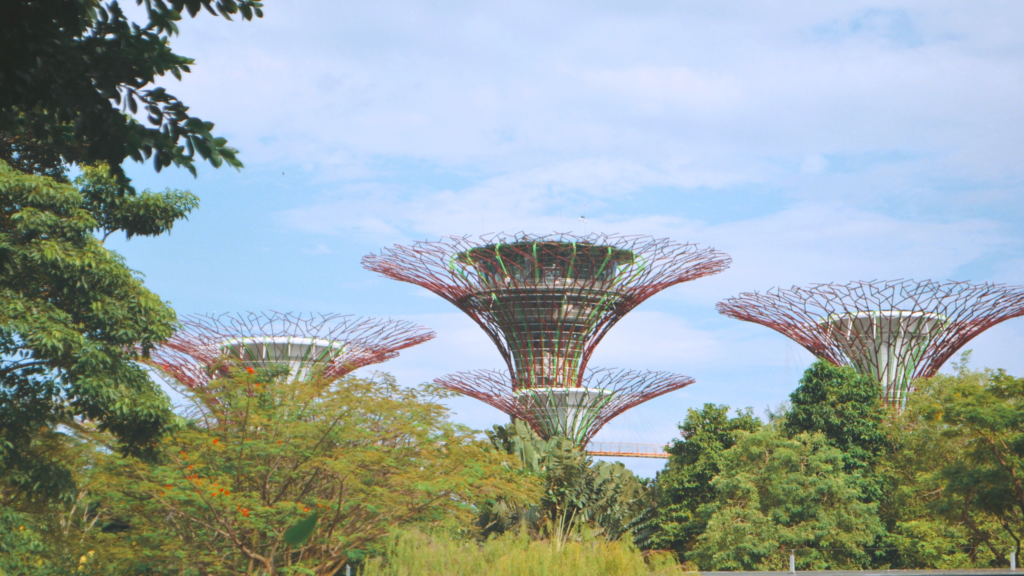
This Singapore Travel Guide will start with the most basic thing you need to visit Singapore: a Singapore visa! More often than not, you probably won’t need a visa to travel to Singapore, with most countries having visa-free access to the country. That being said, there are still some countries that need visas to visit Singapore. According to the official website of Singapore’s Ministry of Foreign Affairs, the following countries, as of this writing, need visas to travel to Singapore:
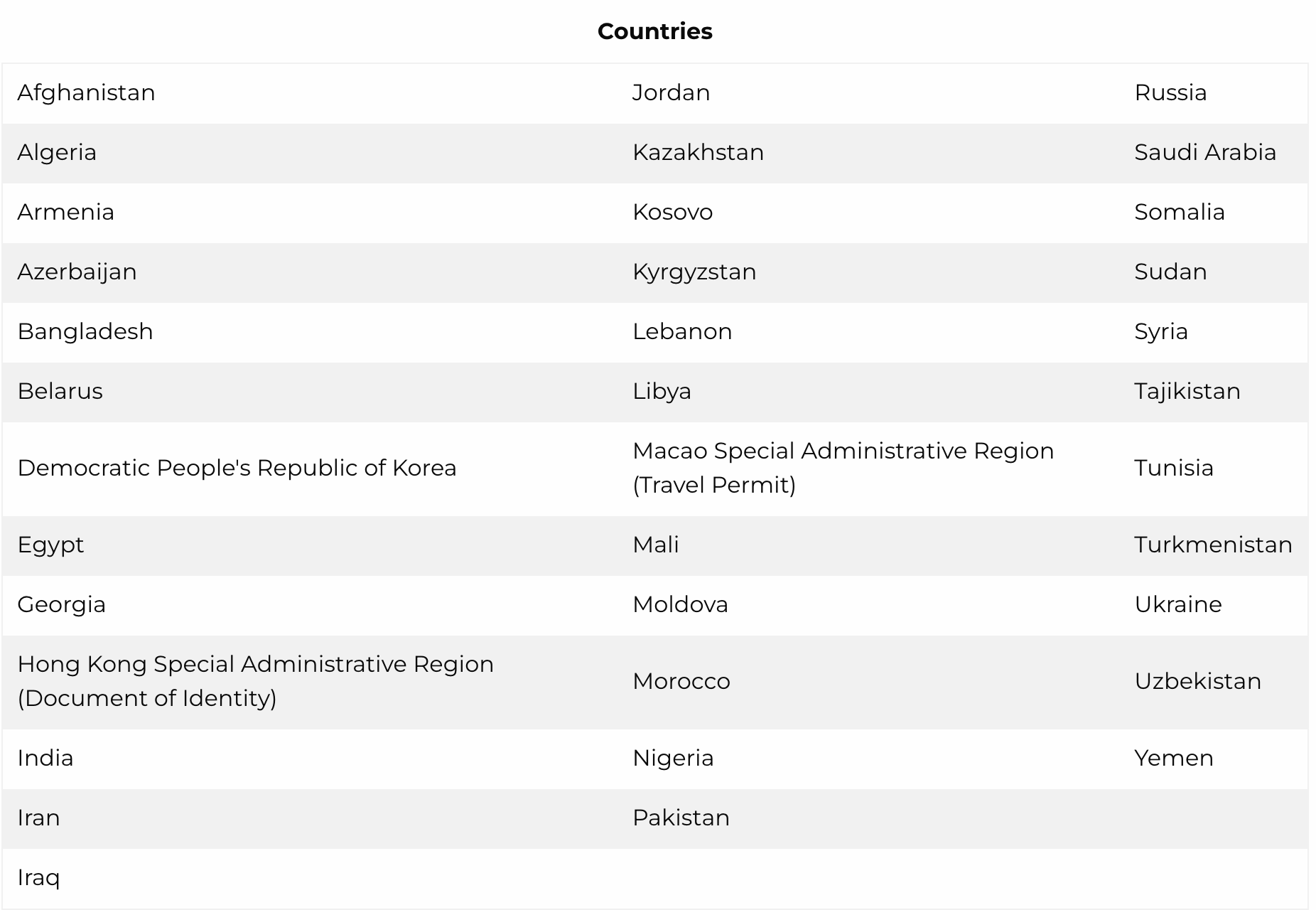
Click this link to access the Foreign Affairs website and learn more about the documents that you’ll need processing times, and application fees for Singaporean visas.
When To Go and Climate
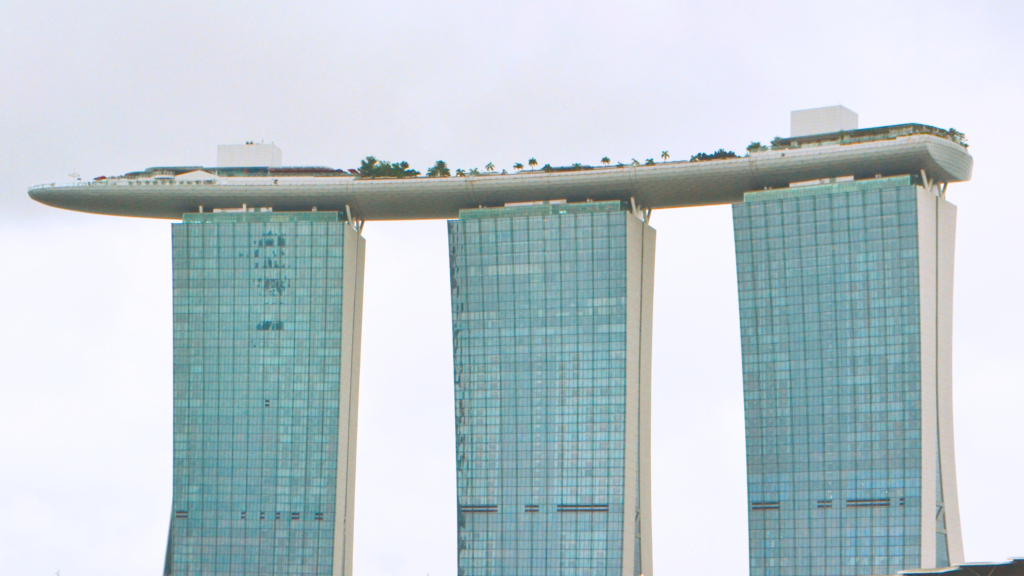
The first question any traveler asks when planning a trip is when. When is the best time to go so I can avoid any bad or undesirable weather? Luckily for you, Singapore is one of those rare destinations where, barring any rain, any time of year is a great time to go! The weather year-round is fairly consistent, with temperatures hanging around the low thirties (nineties for any American readers out there), although it does get hotter during the summer months of June and July and is relatively cooler from January to late March.
Singapore, being a tropical country, also has year-round humidity that you’ll have to contend with, but it shouldn’t be worse than the other tropical places you’ve visited (Singapore has the added benefit that many tourist attractions are indoors).
Singapore Rain
Now, because it is a tropical country, rain is frequent in Singapore. There are two main monsoon seasons that you should be aware of before you book your trip: the Northeast Monsoon (December to Early March) and the Southwest Monsoon (June to September). December to Early January in particular is the wettest time of the year.
You’ll likely experience heavy rains during these months, although they don’t last long and come and go throughout the day. I visited Singapore in December of 2022 and only encountered rain twice during my trip. Most of the time it was even sunny! So don’t feel like you have to move or change your travel plans because of the rain.
Best Time to Visit
Based on my research and my own experience, I would say that the best time to visit Singapore would be from Late March to Early May and from Late September to Late November. Temperatures are slightly cooler during these times and these are the dry seasons when you can expect less rain. As previously mentioned, however, any time is a great time to visit Singapore.
Now, for the non-weather related factors that’ll come into play, there are certain times of the year when Singapore will be more expensive to visit. Chinese New Year, Christmas, and the days surrounding the Formula One race will command higher hotel, food, and attraction prices. The summer months of June through August are also a popular time to visit, so expect higher prices during those times. Just something to keep in mind before you pull the trigger and book your trip.
How long should I stay?
Singapore is very much an on-the-go city. By that I mean this isn’t the kind of destination where you chill by the pool or lounge on the beach for the entire day (unless you’re planning on spending a day at Sentosa’s man-made beaches or spending your time admiring the views from the rooftop pool of the Marina Bay Sands). Singapore was meant to be discovered and, if you want to be able to understand the country and get to its roots, you need to be seeing as many sights as you can and soaking up the culture and history of the country.

How Many Days Should I Spend in Singapore?
As for how many days I would suggest allotting for your Singapore travels, I would recommend spending 6 nights (5 full days and two travel days) in the country, totaling 7 days. 7 days is enough time for you to dive deep and discover what Singapore is about and be able to do all of its attractions at your own pace and style, as well as give you enough room to be flexible and decide what other things you want to see and do.
This is probably a controversial thing to suggest, as most people in the travel community would probably say that Singapore is a 4-day destination at most. But for people who have the time and want to do as much as they can, it’s my philosophy to always have more days than you’ll need because you could just spend the extra time redoing things you enjoyed or doing things you normally wouldn’t do because of lack of time. Singapore is chock full of things to do that you won’t get bored. But yes, if you want to see the main sites and also explore some hidden gems, 7 days is ample enough time to “complete” the country.
How to Divide Days
When deciding how long to visit Singapore, it’d be best to divide up your days depending on which areas of Singapore you’re interested in seeing and grouping them based on location. The Southern Ridges and Henderson Waves can be paired with a day at Sentosa due to them being connected by cable car. The Marina Bay Sands area, along with the National Museum, are located close to one another so you can essentially make one big loop around the harbor and end up at Marina Bay Sands. Chinatown and Little India are near each other so you can explore both in one day, and you can also add Kampong Glam to hit the trifecta of Singaporean neighborhoods.
Once you’ve grouped them, decide how long you want to stay in each area. Depending on how many clusters you have, you’ll know how long you should stay in Singapore. Now if all of that sounds like too much work, I do have two ready-made Singapore itineraries on hand linked below that you can peruse, including one for the recommended 7 days I suggest you spend in Singapore.
Language
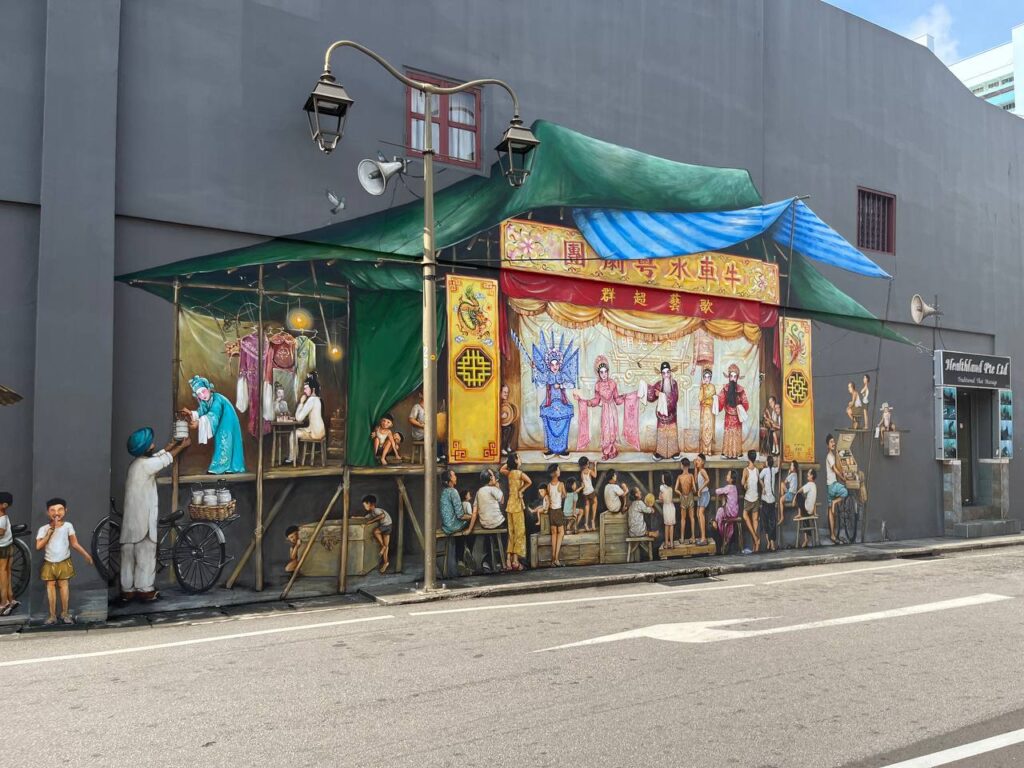
Fortunately, a majority of Singaporeans speak English. Most of them are bilingual, with their other language being Tamil, Malay, or Mandarin. So it shouldn’t be too difficult to get directions from a local or navigate the public transportation system. I personally had no trouble in the country, so if you can read this Singapore Travel Guide (which I’m guessing you can since you looked it up in the first place) language-wise your trip should go smoothly.
How to get to Singapore
By Plane
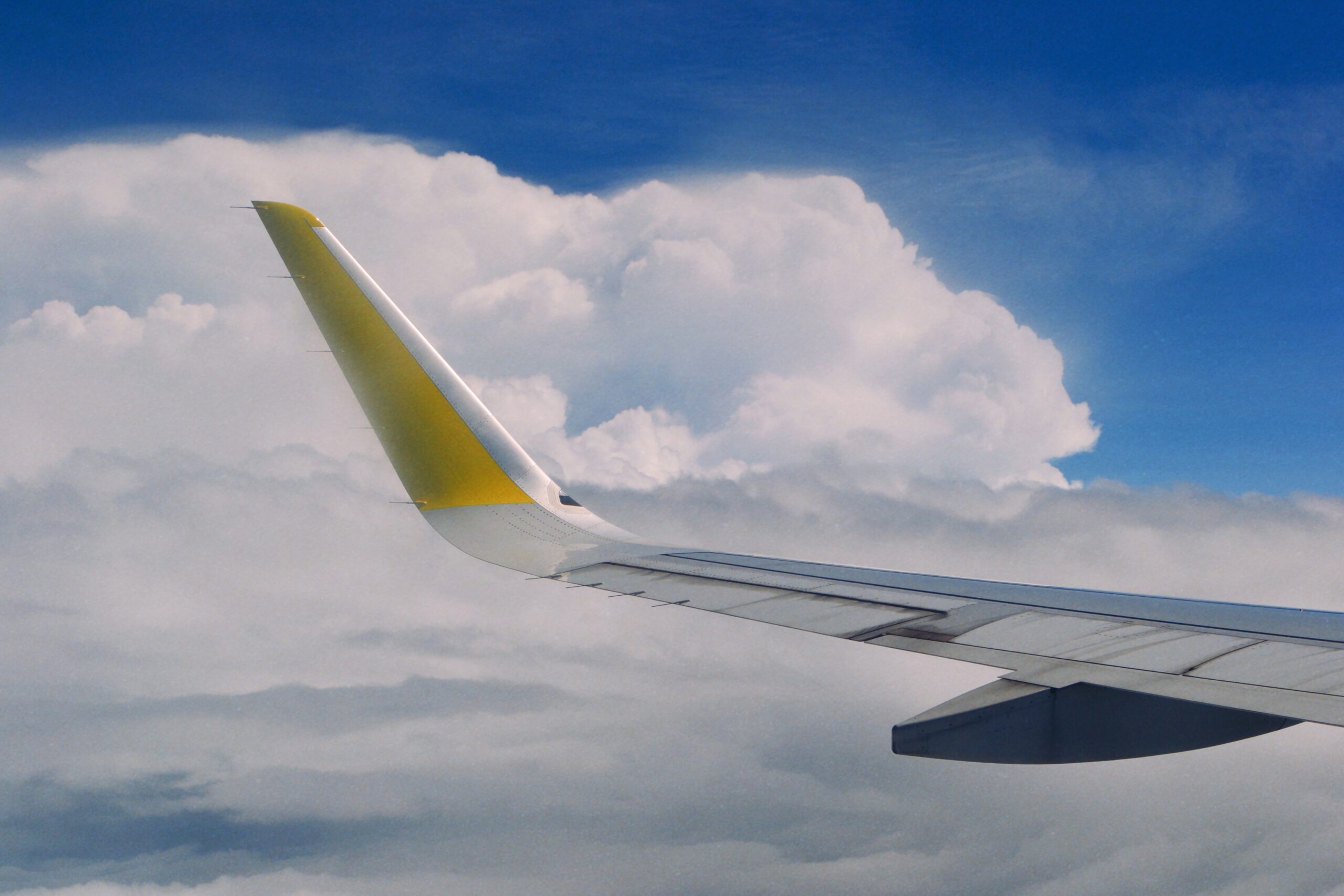
Most people will probably be flying into Changi International Airport for their travels to Singapore. Singapore is a hub for international travel, with a plane taking off or landing at Changi airport every 90 seconds. You’ll find Singapore to be one of the most connected countries in the world, with flights to almost every major city, including flights to and from the US. Changi Airport and its adjoining Jewel are renowned the world over for being a tourist attraction in itself, with the stunning rain vortex acting as the central figure of the airport, which also has its own butterfly garden, movie theater, and various other attractions that earn it the title of the best airport in the world.
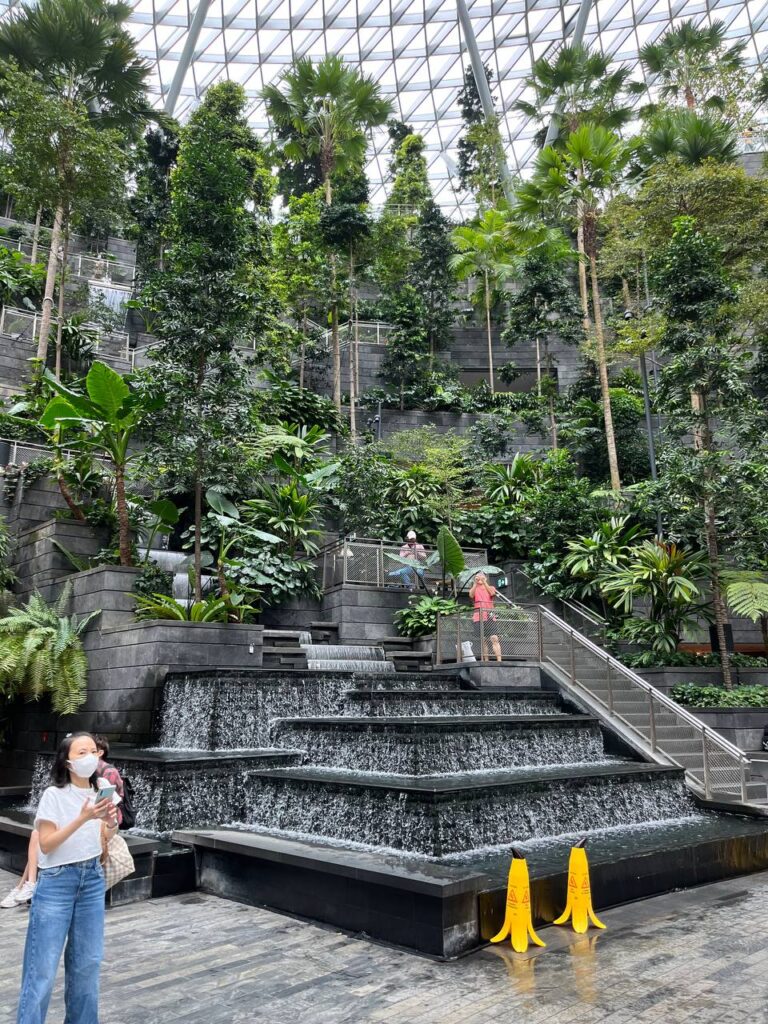
You won’t be hard-pressed to find a flight to Singapore, but if you want to save some money when traveling to Singapore, consider traveling at non-peak times or combining your travels to Singapore with visits to nearby countries in South and Southeast Asia, as I recommend you do in my Singapore on a Budget post.
If you’re coming to Singapore from neighboring Malaysia, however, there are additional ways you could use to make your way to Singapore.
By Road
There are three ways you can reach Singapore from Malaysia by road: By driving yourself, hiring a private car charter, or taking the bus. This Singapore Travel Guide will go over each of their pros and cons, which you will have to weigh if you do decide to travel by road.
Driving Yourself
Driving yourself allows for the most flexibility as you operate on your own schedule, especially if you’re coming from nearby Johor Bahru. It would just be a matter of having the right paperwork with you before you enter Singapore, which consists of the following: valid road tax and insurance, a Singapore Land Transport Authority Approval Email, and a Land Transport Authority Autopass Card, which you would need to apply for at least two weeks before you travel to Singapore.
Car Charter
All of this might seem a little much, so if you still want the convenience of traveling by road but want something a little more private than a bus and are willing to pay more, you could always consider chartering a car! You would have your own private driver who will sort out all the paperwork for you. This option is also good for people who don’t want to spend hours driving from, let’s say, Kuala Lumpur to Singapore. I’ve found some good charters on Klook, which can be found here.
Bus
The final option for traveling by road would be to take a bus. This would be the most economical way of traveling to Singapore from Malaysia and is popular with the backpacker crowd. Several operators ply the highways to Singapore, with departures leaving from many major tourist cities in Malaysia including KL and Penang. A bus from KL would take around 4 hours, while a bus from Penang would take close to 8 hours. You can find info on buses from Malaysia to Singapore here.
By Train
While there is no direct ETS train (Electric Train Service, the name of Malaysia’s train network) that travels from the major Malaysian cities to Singapore, as that route is planned for future expansion, there is a way to travel to Singapore by train. The route, however, requires two line changes and takes about 10 hours to do.
Because of this, I would not recommend taking the train to Singapore unless you’re on a tight budget or until the line that connects Johor Bahru with KL opens, which would take out one line change and smoothen out the whole process of getting to Singapore by rail. It should also be noted that the Singapore railway station is in Woodlands, which is out of the way from Downtown Singapore where all the tourist areas are. If you would like to know how to travel via train, however, I would recommend checking out the ETS website.
Currency and Money Matters
The Singapore currency is the Singapore Dollar or SGD for short. You can find money exchange places all over the island, with most of them offering competitive rates. While I didn’t use them, the currency exchange desks in Changi Airport aren’t as bad as other exchange places in other airports. And based on my research, the best exchange place is the one found in the Mustafa Center in Little India.
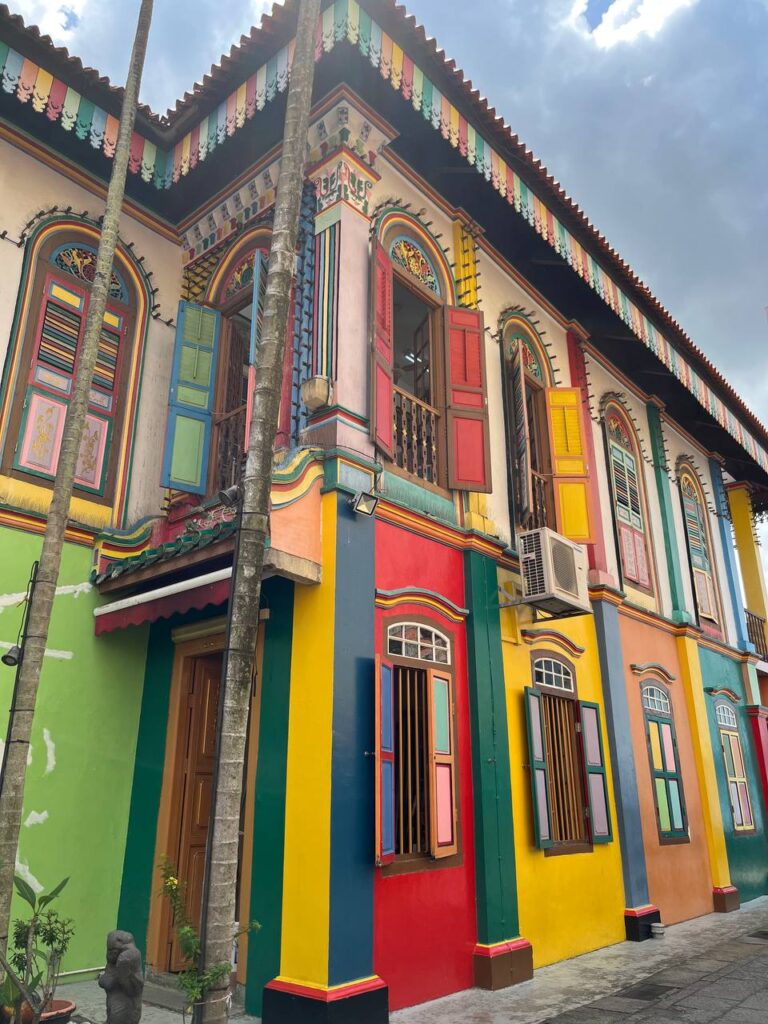
You can also withdraw cash from ATMs. UOB ATMs shouldn’t have withdrawal fees, but I’d recommend using the ATM Fee Saver app to double check as their terms and charges could have changed. Remember to call your bank in advance to tell them that you’ll be traveling if your bank requires you to do so.
Singapore isn’t completely cashless, with most Hawker Center stalls still only accepting cash. So it’d be smart to bring some around with you. And while Singapore is generally safe, it would still be wise to not keep all your money in one place.
Is Singapore Safe?
Singapore, on the whole, is a very safe country to visit. It’s the highest ranked Asian country in the Global Peace index. This is most probably due to the fact that Singapore has some of the most stringent crime deterrents in the world, with punishments such as the death penalty and caning for various crimes related to things like illegal drugs and gun violence. Even violations such as chewing gum or smoking outside designated smoking areas can carry with them a hefty fine.
Violent crime is almost non-existent in Singapore, but that doesn’t mean you can let your guard down. Pickpockets still operate in heavy tourist areas like the Gardens by the Bay and Orchard Road. Always leave some money at your accommodation, don’t wear any flashy jewelry or clothes, and keep track of your valuables. You don’t need to be on high alert, but take the same precautions you would in any other big city.
How to Get Around Singapore
Singapore has one of the most robust transportation systems in the world. Where you can’t get to via subway (or MRT as they call it there), there are a variety of bus options available to you. Grab also has a presence here in Singapore for all your rideshare needs. I’ll go over each possible mode of transportation below. As always, Google Maps is the way to go to find bus schedules, MRT times, and best routes to get around town.
MRT
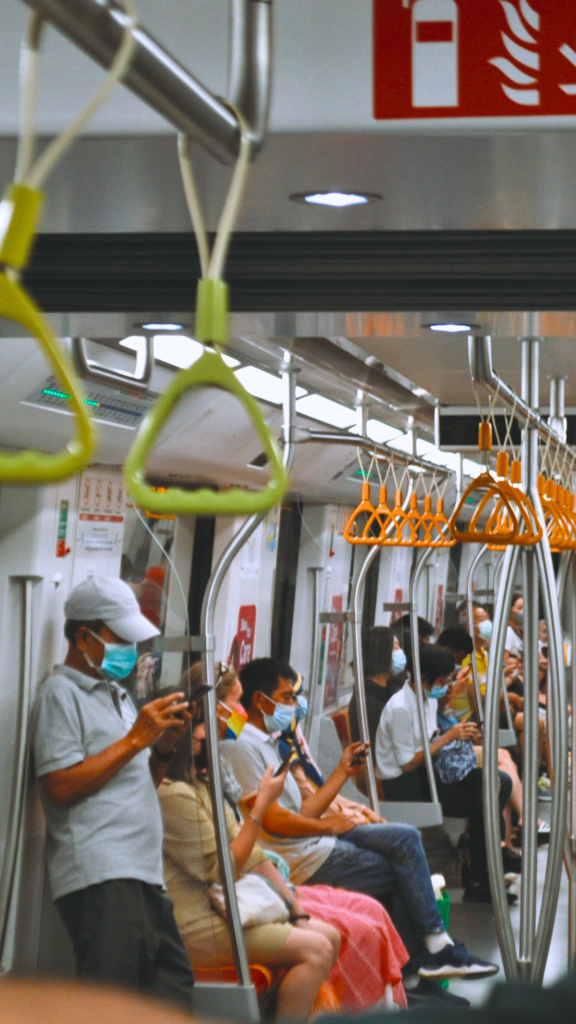
The MRT is the fastest and most efficient form of transportation in Singapore. Because of Singapore’s small size, you can go virtually anywhere on the island via subway (with the only exceptions being the Singapore Zoo complex and Joo Chiat). Singapore’s MRT consists of 5 different lines, with all of them running from 5:30am to 12:30am as of this writing. Journeys vary from $1.5 SGD to $2.5 SGD depending on the distance traveled, and you can use either a debit / credit card or an EZ-Link pass to pay for your fare. Note that the fare is the same whether you use a debit card, credit card, or an EZ-Link pass.
Buses
EZ-Link passes work on buses as well. The buses in Singapore run similarly to the MRT in that they start running at 5:30am and run until 12:30am. Just like the MRT, the fare you pay depends on how far you’ve traveled, which is why it’s important to tap out of the bus when you exit to ensure that you don’t get charged for a ride to the end of the line, which would be more expensive.
You can also buy the Singapore Tourist Pass, which offers unlimited bus and MRT rides over a set period of time and for a fixed amount. The card costs 22 SGD (US$ 16.30) for one day, 29 SGD (US$ 21.50) for two days, and 34 SGD (US$ 25.20) for three days. The price includes a deposit on the card worth 10 SGD, which you can claim 5 days (at most) after using the card. I personally didn’t purchase this card, mostly because Singapore is pretty walkable once you get to the district you want to explore, so I could never justify spending this amount on unlimited rides when I wasn’t even sure I’d ride the bus and metro enough times to make my money back. But if you would rather ride buses and the metro for short distances, then this might be for you.
Taxis and Grabs
Taxis are widely available in Singapore. You can hail one from pretty much anywhere except the Central Business District where you have to wait at a designated taxi stand to hail one. You can even call some operators to book one in advance. However, while they may seem affordable on paper due to their per-kilometer fee being relatively low, the hidden fees make them sneakily expensive.
There are rush hour fares (M-F 6am-9:30am, M-Sat 5pm-8pm) where your fee increases by 25%, nighttime fares that up your fee by 50%, and Airport, Marina Bay, and Financial District surcharges that increase what you’re going to pay by a significant margin. It’s for these reasons that I wouldn’t recommend using cabs to get to your destination.
If you must take a car to get somewhere, Grab is definitely the way to go. It’s Southeast Asia’s version of Uber, and works just like Uber. Prices are more competitive compared to cabs, and its good practice when in Southeast Asia to rely on Grab to avoid scams (you’re probably not going to get scammed in Singapore, but you absolutely can get scammed in other Southeast Asian countries)
Cable Cars
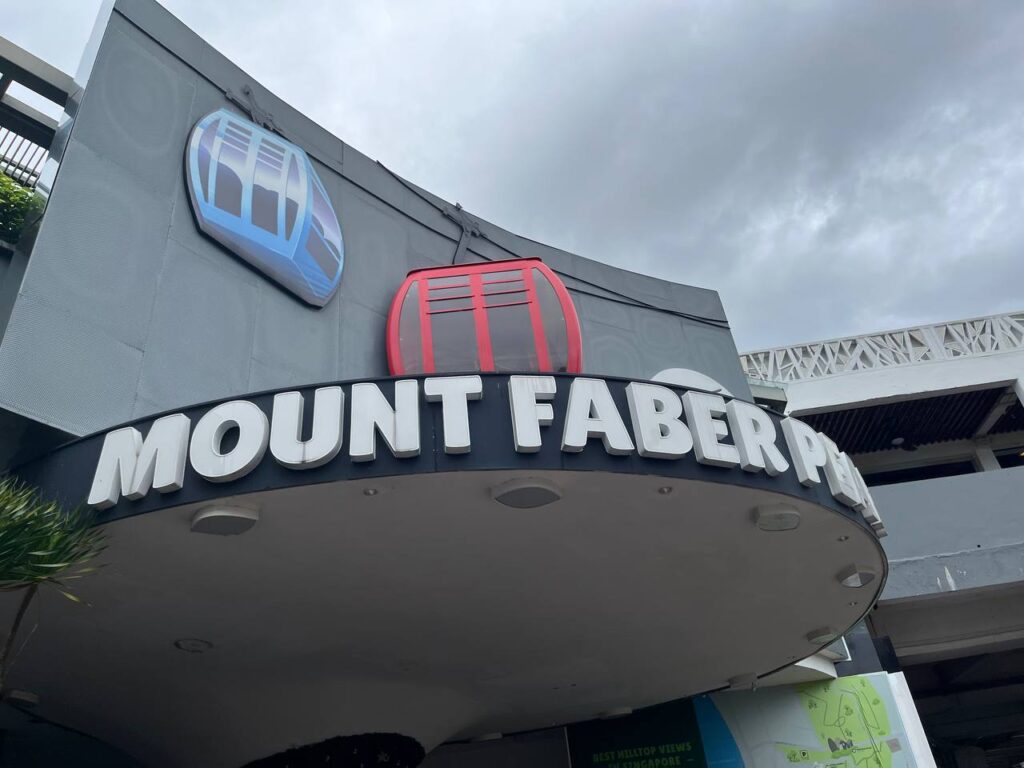
Singapore has two cable car lines, both servicing the island of Sentosa, with one connecting Sentosa to Mount Faber, which gives you access to the Southern Ridges, and another connecting one side of Sentosa to the other. Ticket types go from a one way ticket to unlimited rides for an entire day, with prices going up depending on how many rides you buy. I would recommend using them to get to Sentosa, and they’ll probably be less congested than taking the Sentosa Express. Click here for more information.
SIM Matters
As always, I recommend using the app Airalo for all your E-sim needs. They’re reliable and have extensive coverage. Plus the e-sims are easy to install and you can turn them on and off as many times as you wish. Just remember to activate it once your trip begins to be sure you have full coverage for the duration of your trip. It’s a great service and I would be remiss not to include it in this Singapore Travel Guide.
But if you need something a bit more budget friendly, and are willing to use a physical sim, I used this sim on my last trip to Singapore. It was pretty dependable for what it’s worth. Plus you pick it up right outside baggage claim at the arrival halls of Changi International Airport. This is especially beneficial if you’re in Singapore for a short period of time. Just be sure to have a phone that isn’t locked to a particular sim card provider. The same stipulation applies to using Airalo too.
What to Pack and Plugs
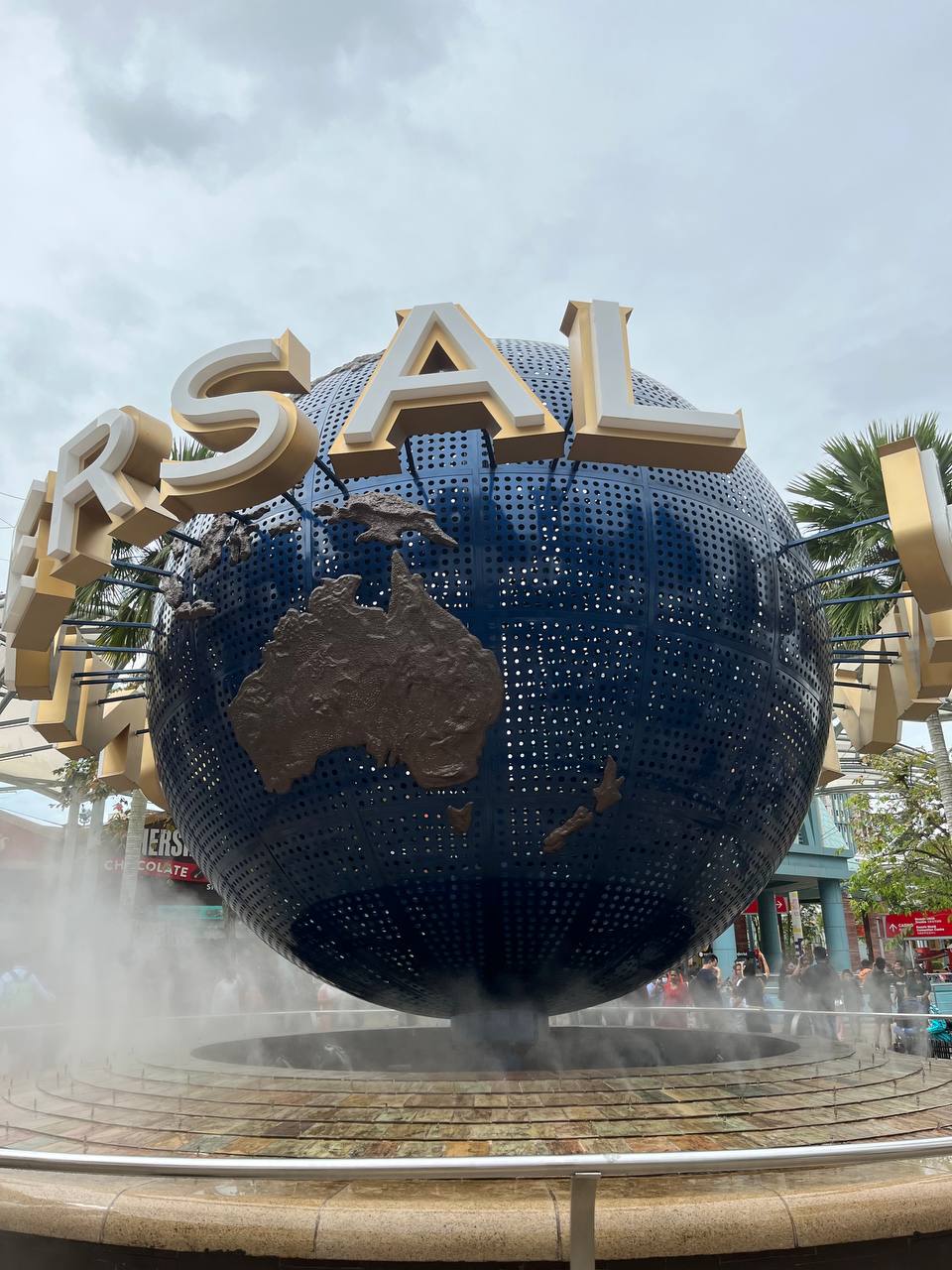
Singapore is hot and humid all year around, so unless you plan on going to fancy restaurants, I would recommend wearing light clothing. Shorts and thin t-shirts are the name of the game here, and if you plan on going to the beaches of Sentosa or hanging around the hotel pool, then bring a pair of flip flops. Bring a good pair of walking shoes too because you will be walking all over the place in Singapore. Pack some sunscreen and a good hat or cap as well to protect you from the harsh Southeast Asian sun.
The other thing you have to prepare for is rain. It rains in Singapore a lot, as it does in any tropical country. It usually only rains in spurts in the afternoon, which is prime touring time so bring a raincoat or rain jacket and an umbrella to shield yourself from the rain.
As always, I recommend bringing 1-2 portable chargers, depending on how much battery life your phone eats up in a day. These have been lifesavers for me and you can usually get some of them for cheap on Amazon or most electronic shops.
Singapore also uses Type G plugs, and they’re usually at a 230V voltage.
Must-See Attractions
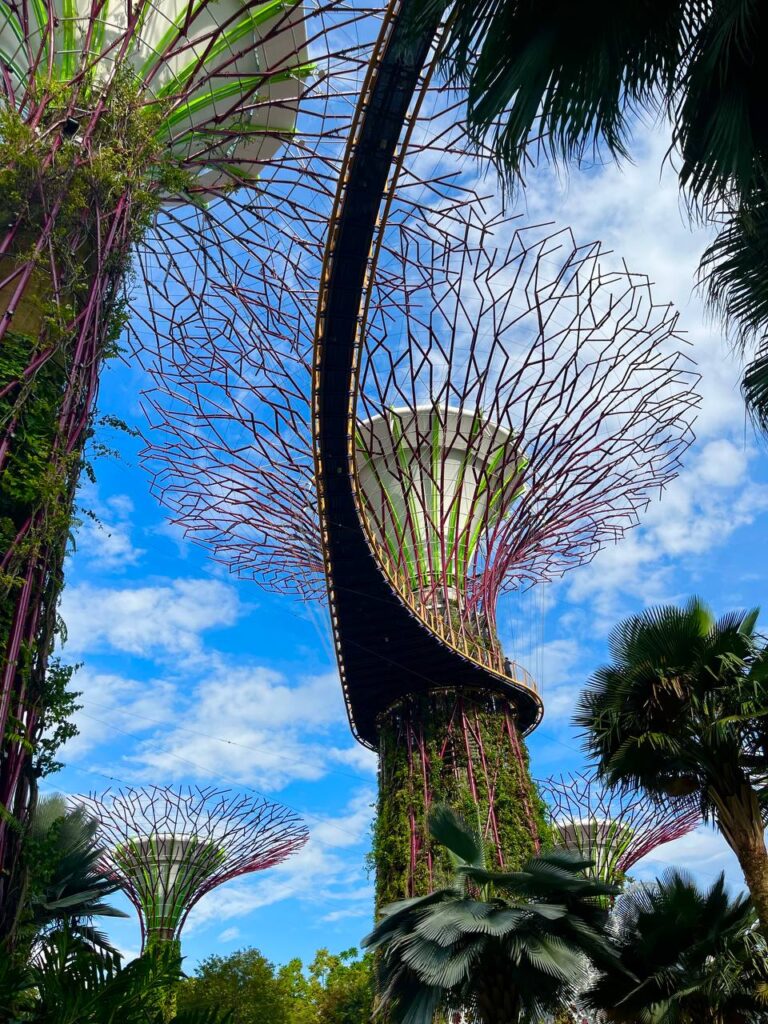
This Singapore travel guide wouldn’t be complete without going over some of the best things to do in Singapore! Singapore has a plethora of things to see and do, which is why I don’t agree with most people that say that Singapore is a “long weekend country”. I was there for six days and felt like I missed out on a few things. From enchanting gardens, towering skyscrapers, and eclectic districts to world-class theme parks, rising mountains, and futuristic installations, there’s bound to be something for everyone in Singapore.
I’ll try to summarize the highlights in this post. You can find itinerary posts where I go into detail about what to see and do on your trip to Singapore in the itinerary section below. You can also find a post about free attractions you can do and see in Singapore here. The sights listed below are in no particular order.
Tiong Bahru
Known for its art deco architecture and beautiful murals, Tiong Bahru is the oldest public housing estate in Singapore. With buildings that date all the way back to the 1920s, this district is known for its hip cafes and shops. The neighborhood was the first place I visited on my last trip to Singapore. I had breakfast at Tiong Bahru Bakery, which is known for their Kouign Amman, which is a baked good similar to a croissant. I would highly recommend having breakfast here then walking around the neighborhood to find all the murals that pepper the walls of this area.
Chinatown
With its myriad of temples, delectable hawker centers, and charming neighborhood streets, Chinatown is a must visit on any trip to Singapore. Also known as Kreta Ayer, Chinatown was the landing place of Singapore’s earliest migrant population and was officially created when Sir Stamford Raffles decided to create neighborhoods based on the ethnic groups that lived in Singapore. Fun fact: Singapore’s Chinatown is the only Chinatown that has a mosque, Hindu temple, and Buddhist temple on the same street! Moreover, Chinatown’s temples like the Thian Hock Keng Temple, the Buddha Tooth Relic temple, and the Sri Mariammen temple are all beautiful cultural monuments, while the hawker centers contribute to the hustle and bustle of the neighborhood. Its central location also makes it a good accommodation spot. Be sure to spend some time in this area on your Singapore travels.
Gardens by the Bay
One of my personal favorite parts of Singapore, the Gardens by the Bay are a technological marvel. You’ve probably seen pictures of this place on instagram. Singapore spent over 1 billion dollars to create these gardens. Seeing the enormous Supertrees, which range from 25-50 meters in height, for the first time was awe-inspiring, as was exploring the two greenhouses, named the Flower Dome, which is the largest glass greenhouse in the world, and Cloud Forest, which is 35m tall and houses the world’s second tallest indoor waterfall (after the Jewel). While admission is a bit pricey, entering these two superstructures is well worth the price. And if you’d rather not pay, the Supertree Grove is free for anyone to see. This place is a must visit for any traveler heading to Singapore.
Klook.comHawker Centers
If you want to be truly immersed in Singaporean culture, there’s no place to do it like a hawker center. Thousands of Singaporeans flock to these bastions of cuisine every day, and the food lives up to the hype. Some of these stalls have even won major awards, including several of them being given Michelin stars. The first hawker center, the Chinatown Complex, was constructed after the government decided to house all the street food vendors in buildings to avoid them clogging up the streets. You can now find them scattered across Singapore. My favorites are the aforementioned Chinatown Complex, Maxwell Food Center, the Tekka Center, and Newton Food Center (the last one was even seen in Crazy Rich Asians). And unlike the rest of Singapore, meals here are cheap! If you’re looking to stretch your dollar, these centers are the perfect place for that!
Joo Chiat
Named after Chew Joo Chiat, a wealthy Chinese landowner from the early 20th century, this charming district located a little ways away from the downtown area is known for its quaint cafes and stores, as well as its colorful and historical shophouses. Due to its location it may take a while to get there, but it’s well worth the trek. Exemplifying the “melting pot” culture of Singapore, add this to your itinerary if you’re interested in seeing the Peranakan culture of Singapore, which is the culture of those who were born of Chinese and Malay heritage, on full display.
Museums
Singapore’s culture is also on full display in their well-curated and enthralling museums. I was lucky enough to visit three of them on my trip, and each of them offered something unique that made the admission price worth it. The National Museum of Singapore goes deep into the culture and history of the city-state, with larger than life exhibits and interesting displays. The National Gallery contains a very expansive collection of Southeast Asian art and is sure to please every art-aficionado. The ArtScience museum, which as the name implies dives into the intersection of art and science, has fun and instagram-worthy fixtures that are fun for everyone.
Other museums, like the Asians Civilizations Museum and the Peranakan Museum, explore certain subcultures that are worth your time and interest. You can’t go wrong with any of these museums and if you have time, making a trip to all of them is well worth the admission fees.
Klook.comMarina Bay Sands
A beacon that stands as an important icon of the city, the Marina Bay Sands is as stunning in person as it is in pictures. Owned by Las Vegas Sands, it’s the world’s most expensive standalone casino property, costing over 6 billion USD. Within its doors are sparkling interiors, a man made canal, museums, shops, restaurants, and of course the impressive hotel itself that has 2561 rooms. If you have an hour to spare (and don’t want to pay the exorbitant nightly prices), consider ascending to the roof deck of the Skypark for an unparalleled view of Singapore and the Gardens by the Bay, as well as the Singapore Strait with all its cargo ships.
Klook.comLittle India
Another one of Singapore’s cultural centers, Little India is probably one of Singapore’s most colorful and vibrant areas. A former racecourse, it became an Indian neighborhood after the cattle trade became popular, which resulted in cattle traders hiring Indians and them populating the area. Boasting shops (such as the Mustafa Center) that sell all sorts of interesting wares, hawker centers with a flair for Indian food, and impressive temples hidden within its streets, such as Sri Veeramakaliamman, Sakya Muni Buddha Gaya, and Sri Srinivasa temple, as well as the iconic Tan Tieng Niah house, Little India is a can’t-miss neighborhood that is well worth dipping your feet into and exploring.
Kampong Glam
Also known as the Muslim Quarter, this area of Singapore is known for its two famous shopping roads: Arab Street and Haji Lane, the latter being named after the famous Muslim pilgrimage to Mecca, as well as its mosque, the Sultan Mosque, which opened in 1932. Come here for tasty middle eastern delights, as well as some premium shopping experiences. Although the crown jewel of the area has to be the Sultan Mosque. Non-muslims are confined to the front of the mosque, but seeing the intricate patterns on the carpeting and the various gold-trimmed fixtures is sure to leave an impression and merits an inclusion in the must sees of this Singapore Travel Guide.
The Quays
Known as the party center of Singapore, the Quays, consisting of Robertson Quay, Boat Quay, and Clarke Quay, are known for their nightlife and innumerable restaurants and bars. Originally used as a dock for the houses located along the Singapore river, these quays are the best place to be if you’re looking to party. Clarke Quay is also where the Singapore River Cruises depart from. These wooden boats take you from Clarke Quay and head down the Singapore river before encircling Marina Bay, passing by the famous Merlion, the Marina Bay Sands, and the Helix Bridge. If you want a look at Singapore from a unique perspective, definitely place this boat cruise high on your bucket list.
Klook.comThe Zoos
Known around the world as some of the best zoos in the world, the Singapore Zoo, Night Safari, and River Safari each offer a unique experience that lets you get up close and personal with the animals. On my last trip, I only visited the Night Safari, and it was one of the top highlights of my trip. Ride the tram for a great introduction to the whole park, then grab a map and head deep into the many trails and pathways that make up the park and see these nocturnal animals in enclosures that make you feel like they’re just a few feet away from you. Truly an unforgettable experience.
Klook.comBotanic Gardens
Sitting on over 200 acres of land, the 165-year old Botanic Gardens are a plant-lovers paradise. Initially created by Sir Stamford Raffles and originally located at Fort Canning Park, you can get lost in its lush vegetation and see attractions such as the National Orchid Garden, the Children’s Garden, and the Ginger Garden. I spent the equivalent of one morning at the gardens and I honestly could have spent the entire day there. It was amazing seeing all the different areas of the gardens, although I had no luck running into any of its resident otters.
Orchard Road
The shopping mecca of Singapore, Orchard road is flanked by malls on either side, providing visitors with the ultimate shopping adventure. Formerly a fruit orchard, hence the name, you can step into any of its 25 massive (and air-conditioned) malls, such as Ion Orchard, Ngee Ann City, and Orchard Central, to find everything from designer brands to electronic items. Don’t forget to try the unique ice cream sandwiches that pepper the sidewalks of Orchard Road.
Sentosa
Singapore’s undisputed number one playground, Sentosa is an adventure lover’s paradise. This island was formerly a British Military base and, during World War 2, a Japanese internment camp, with the name Sentosa meaning “peace and tranquility” in Malay. Explore Singapore’s world class Universal Studios theme park with rides themed to Transformers, Shrek, Jurassic Park, and more, or soak in Sentosa’s other attractions, such as its cable car system, the Luge, the S.E.A. aquarium, and the island’s many beaches. Speaking of beaches, restaurants and bars adorn the shores, giving visitors plenty of opportunities for after hours fun. Definitely make Sentosa a part of your Singapore itinerary.
Klook.comSouthern Ridges
Did you know Singapore has mountains? It’s true! If you fancy exploring Singapore’s lush mountains from above, definitely make your way to the Southern Ridges! They’re a short walk from the cable car stop at Mount Faber, with their most famous area being the Henderson Waves, a steel and wooden bridge opened in 2008 that is suspended high above the passing cars below it. If you have more time, explore its over 10 kilometers of walkways, including the steel treetop walks that allow you to see the surrounding forests from above.
Changi Airport
I know, it may seem weird that the international airport is an attraction in and of itself, but let me tell you that seeing the Rain Vortex at the Jewel is one of those experiences that leaves you speechless. Setting the world record for tallest indoor waterfall, and opened in 2019, the rain vortex is surrounded by levels of trails to explore, backed by restaurants and shops and a play area on the very top floor that includes a glass bridge, ropes courses, and other activities. More than that, the airport itself is spectacular, boasting cinemas, butterfly gardens, and even a Dinosaur bike ride experience. Set aside some time after your arrival or before your departure to explore everything Changi Airport has to offer.
Klook.comItineraries
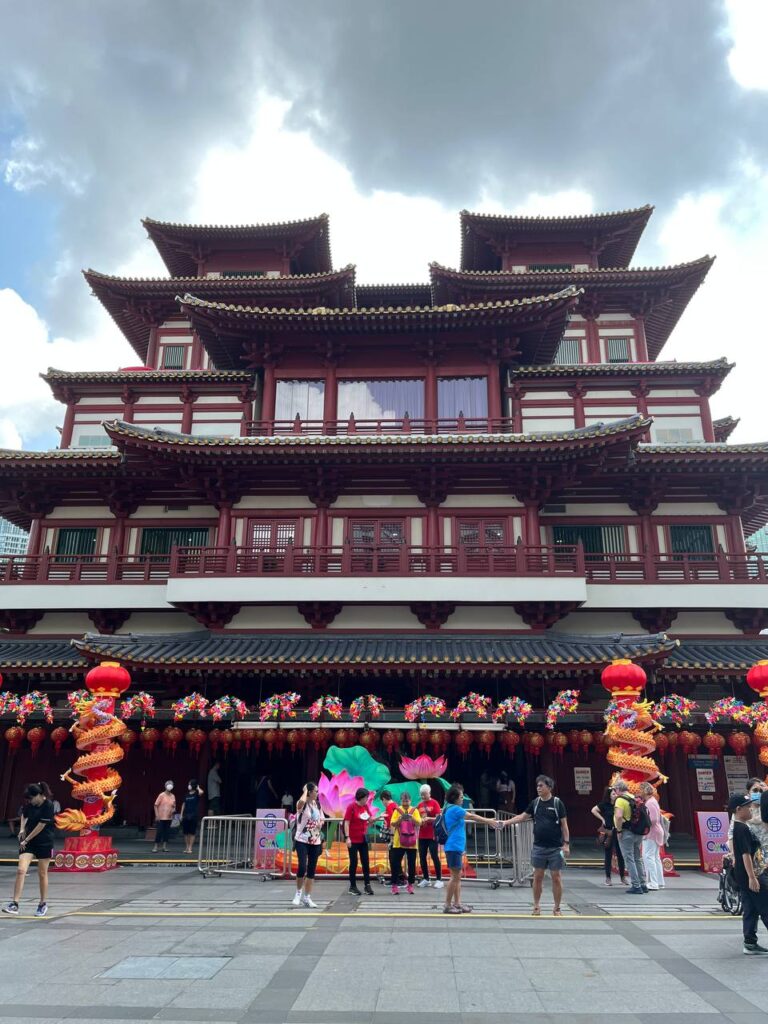
I have itineraries for a weekend and a week-long trip to Singapore! Access them below.
Tours: Should You Take One?
If you look at websites like Viator or GetYourGuide, you’ll find a multitude of tours available for you to purchase. However, you’ll also notice that a lot of them are very expensive. It’s hard to find a good tour that costs less than $100 USD per person. This is, again, due to the fact that Singapore is an overall expensive city to visit, so tours also run kind of expensive.
On the whole, I don’t think I would recommend you go on any tour in Singapore. Their robust transportation system means you don’t really need a private car to take you around. They have an incredible history museum where you can learn about the country without having to pay $100 USD for a guide to tell you the same things. None of the attractions require a tour to fully enjoy the experience of visiting them. English is also widely spoken so you wouldn’t need an interpreter of any kind. And finally, the Hawker Centers are easy to navigate and it’s easy to figure out which stalls are worth visiting by doing a quick online Google search.
I don’t think I encountered a single tour group during my entire stay in Singapore. It really just isn’t part of the tourist culture in that country because of how easy it is to navigate. However, if you would still like to go on some tours, here are the ones I would recommend:
Historical Singapore Bike Tour on Full-Sized Bicycles
Experience Singapore: Cultural Cooking Class
Lion City Bike Tour of Singapore
Where to Stay
Arguably, the best place to stay in Singapore would be anywhere within a five minute walk from a subway stop. Singapore’s transit system is so expansive that you would be wise to locate yourselves near one for easy access to Singapore’s myriad of attractions.
Popular areas to book include Little India and Chinatown for low budget to mid-range accommodations, while Marina Bay and Orchard Road headline the higher-end tiers.
Furthermore, I’ve listed some notable places for you to stay below, all categorized by their type of accommodation.
Hostels
While Singapore has a plethora of Hostels, it is worth noting that many of them will be pricier than what you are used to. Prices will generally be higher in Singapore than most places, even for budget accommodations. Expect the usual kind of amenities for this tier of accommodation, including shared bathrooms and bedrooms with bunk bed style beds. Here are some options I’ve seen that could be within your budget (which again, should be bigger than your usual budget) and whose reviews were good enough for me to confidently include them in this Singapore Travel Guide.
Low Budget
Low budget hotels abound in Singapore, some of them centrally located, others not. Like I said previously, do not expect to pay what you would pay for a low budget hotel in Vietnam or the Philippines. But if you need to extend your Singapore dollar, here are the places I’d recommend you check out.
Mid-Range
Singapore accommodations shine in this and the succeeding category. As Southeast Asia’s luxury capital (at least in my opinion), you’re going to get a lot of well-designed mid range options that offer all the amenities of a high end hotel but for a fraction (albeit still big) of the price. Here are the ones I recommend you check out.
High End
These accommodation options are the bread and butter of Singapore. Stunning pieces of architecture with rooftop pools, five-star restaurants, and resplendent rooms. If you’re looking for high end luxury, Singapore is the place for you.
Food to Eat and Line Culture
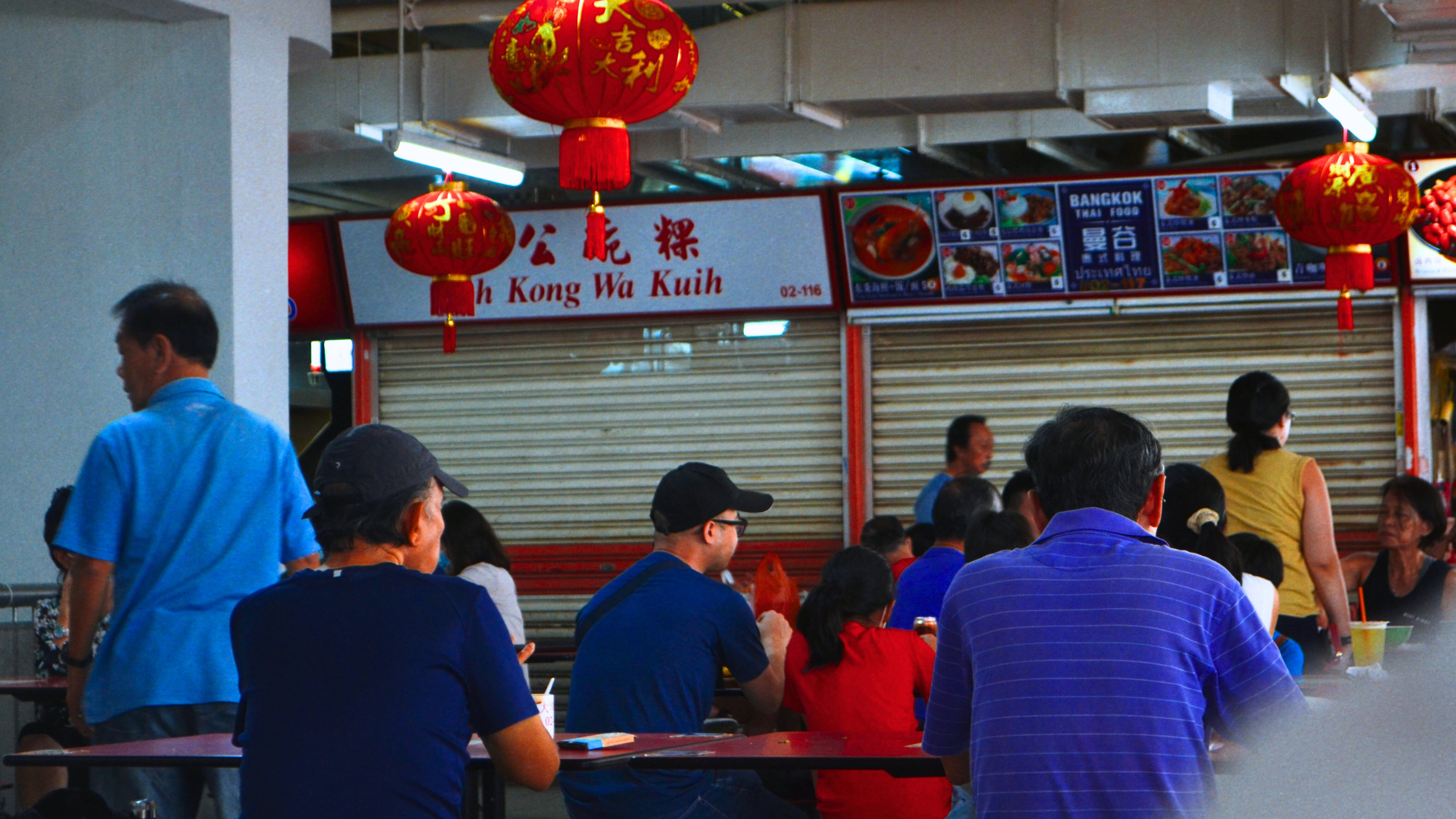
As mentioned previously in this Singapore Travel Guide, Singapore is one of the best destinations for foodies, particularly because of its hawker centers. They can be found across the island and are some of the best places to sample cuisine from all over Asia. I personally think that every hawker center is different, each having their own unique stalls and specialities that are worth sampling. I’ve written a post about must try foods in Singapore.
When you’re at hawker centers, there’s something you need to know regarding the lines that form for food stalls. Singapore has a distinct “line culture”. What this means is that Singaporeans will tend to line up for something if the line is long even if they have no idea what’s at the end of the line because that signifies that whatever people are lining up for must be good. You would be wise to follow them, especially at hawker centers, as long lines usually form for good food. Even though you’d have to wait a little longer, it’ll be worth it to taste the best food that the hawker center has to offer.
Restaurants, Hawker Centers, and Food Experiences
Here are the Hawker Centers I recommend you visit:
Chinatown Complex
Maxwell Food Centre
Tekka Center
Lau Pa Sat
Newton Food Centre
Tiong Bahru Market
Adam Road Food Centre
Other than the Hawker Centers, I will recommend two more Singaporean food experiences that you must do while you’re in the country. The first is having the original Singapore Sling at the Raffles Hotel’s Long Bar. A bartender at the Long Bar invented the drink over 100 years ago as a means for women to consume alcohol when it was still socially unacceptable for them to do so. He did so by making the drink look like a non-alcoholic fruit juice. Drinking a Singapore Sling is a must do when in Singapore, and this Singapore travel guide would be incomplete without it.
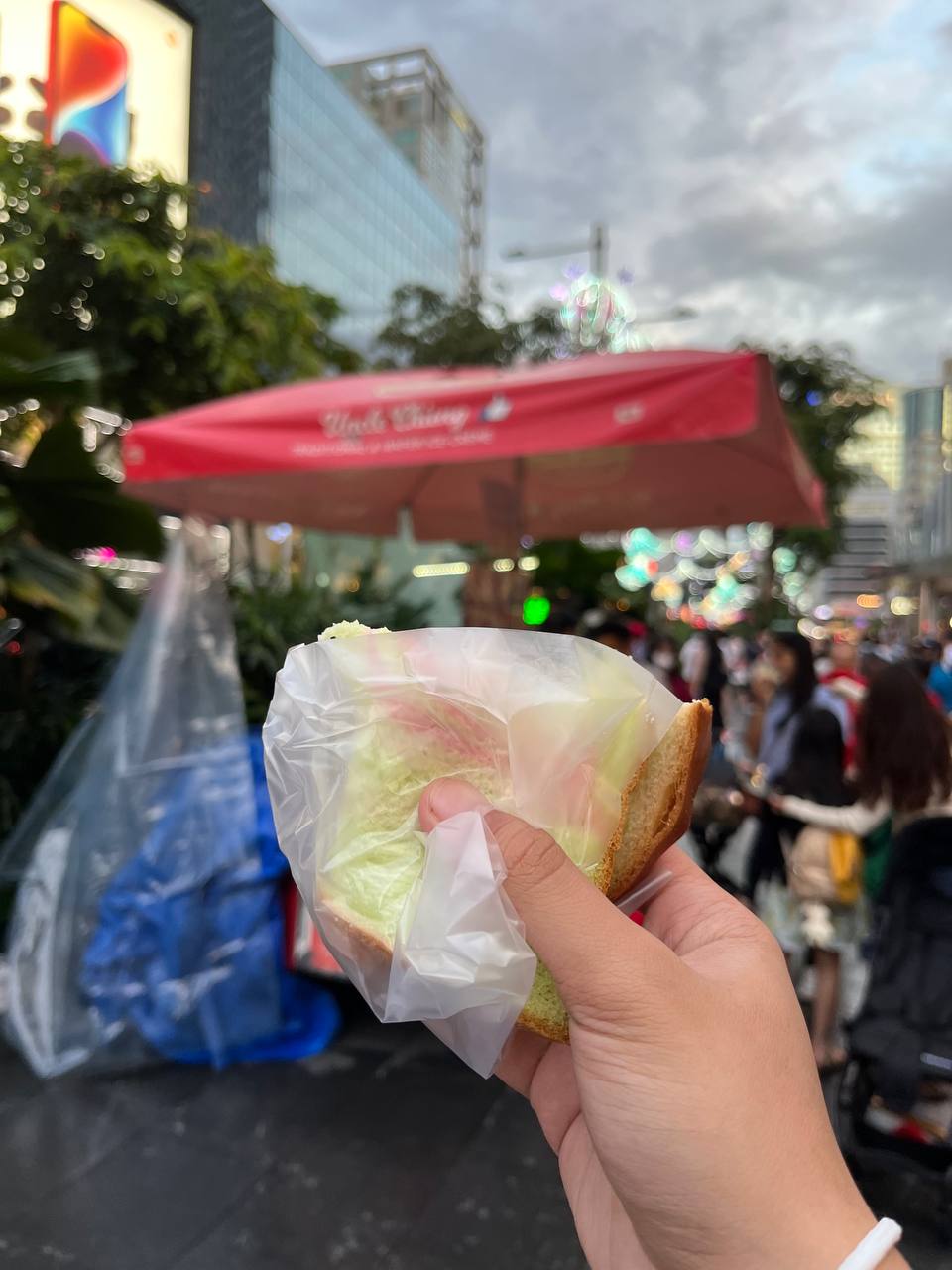
The other experience I would recommend would be trying the ice cream sandwiches on Orchard Road. Vendors will take a slab of ice cream, which can come in over 10 different flavors, and fold a slice of bread around it making it a sandwich. It’s the perfect refreshing treat for when it’s hot outside.
Budget and Money Saving Tips
Trip Budget
Accommodation
You can find hostel and capsule hotel accommodations for a nightly cost of around $25 USD to $70 USD, depending on the location of the accommodation. This places Singapore, like I’ve mentioned, on the pricer side of destinations in general. Nicer hotels and apartments are usually priced at $100 USD for budget hotels to $700 USD per night for places like the Marina Bay Sands. As usual, I recommend booking.com or Agoda for all your accommodation booking needs.
Transport
Roundtrip flights from nearby Southeast Asian destinations can go for as low as $121 USD round trip from cities like Manila, Bangkok, Kuala Lumpur, and Jakarta. Long-haul flight prices will vary, with flights from the West Coast of the US starting at around $750 USD.
Transportation within Singapore is inexpensive. Bus and MRT fares range from $1.5 SGD to $2.5 SGD. Rideshare options and taxis, however, can be on the pricier side. So if you’re looking to save money on transportation, I would ride buses and the MRT as much as possible.
Food
Your budget for food will depend on what kind of dining experience you want for your trip. Eating only in Hawker Centers and cheap restaurants will only set you back around $20-30 SGD a day. Eating in fancier restaurants, however, can set you back more than $100 SGD a meal. For budget travelers, Hawker Centers are your best friends. Because of how cheap Hawker Center food is, this Singapore travel guide only recommends eating at Hawker Centers unless you have the means to afford the more expensive restaurants.
Activities
While there are a lot of free things to do in Singapore, the biggest attractions, more often than not, command high entry fees. Places like the Cloud Forest, Flower Dome, Universal Studios Singapore, the National Museum, the National Gallery, the ArtScience Museum, the Marina Bay Sands Skypark, The Singapore Zoos, and the Singapore River Cruise all have entry fees that on average are higher than most tourist attractions in Southeast Asia. I would recommend budgeting around $30-50 USD per day for attractions. As always, I recommend using Klook for all your Singapore activity booking needs.
Klook.comHow to Save on a Singapore Trip
I want this Singapore Travel Guide to be honest, so I’m not going to sugarcoat it: Singapore is not cheap. It’s the most expensive place to travel to in Southeast Asia. Therefore, if you want to do all the highlights, you need to shell out a significant amount of cash. But that being said, there are still ways to save money on your Singapore trip. I’ve got the perfect posts, linked below, to complement this Singapore travel guide that will help you save money on your trip.
Singapore Travel Guide Conclusion
So you’ve read this Singapore travel guide and have done your own research. After that, the only thing left to do is book that flight. I promise you’re going to have a great time. So eat all the hawker center food, take in all the sights, and really immerse yourself in Singaporean culture. Keep this Singapore Travel Guide handy to help guide you through the country. If you liked this Singapore travel guide, consider sharing it with someone thinking of going to Singapore too! It would greatly help the site. Have a blast!


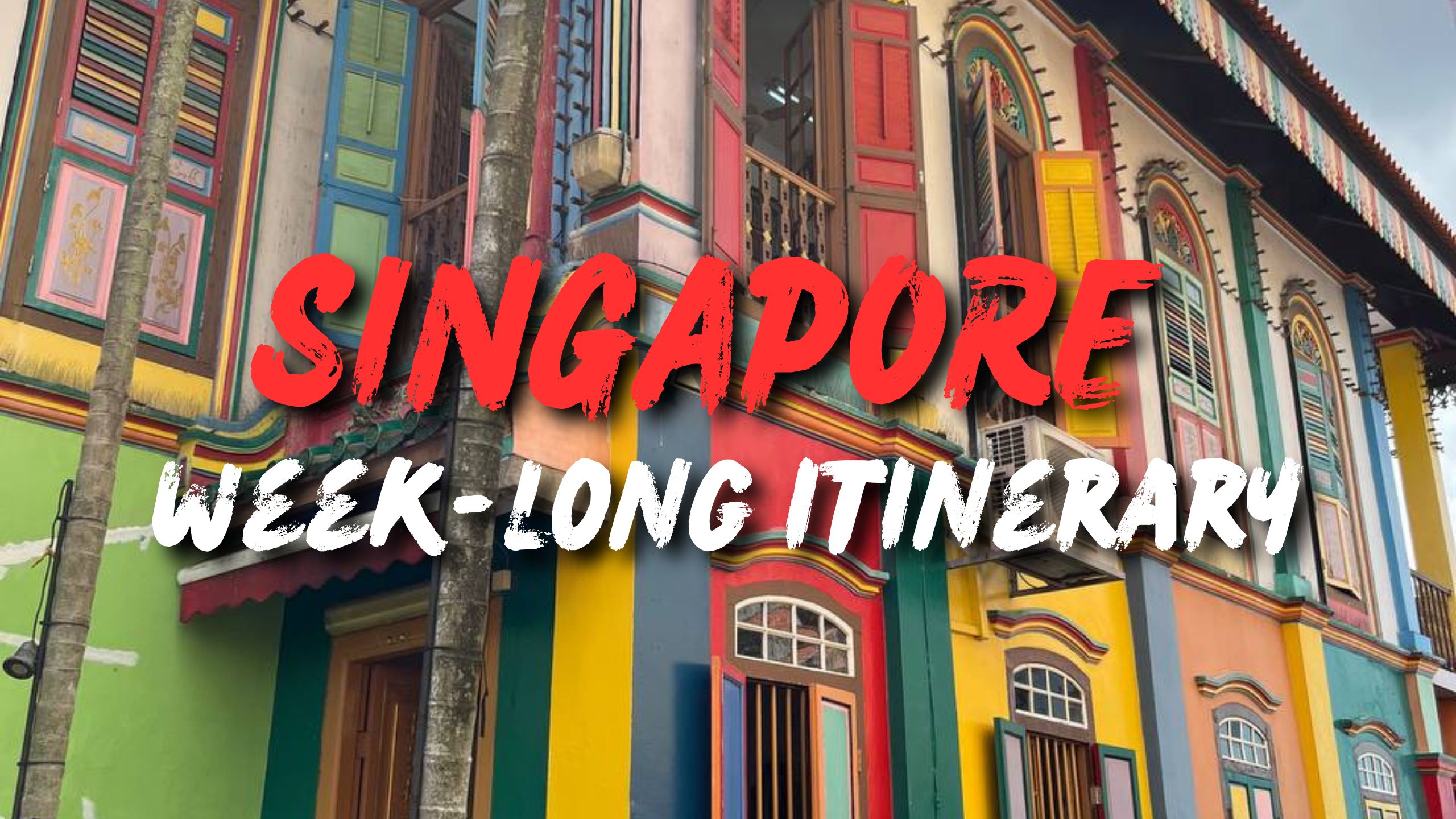


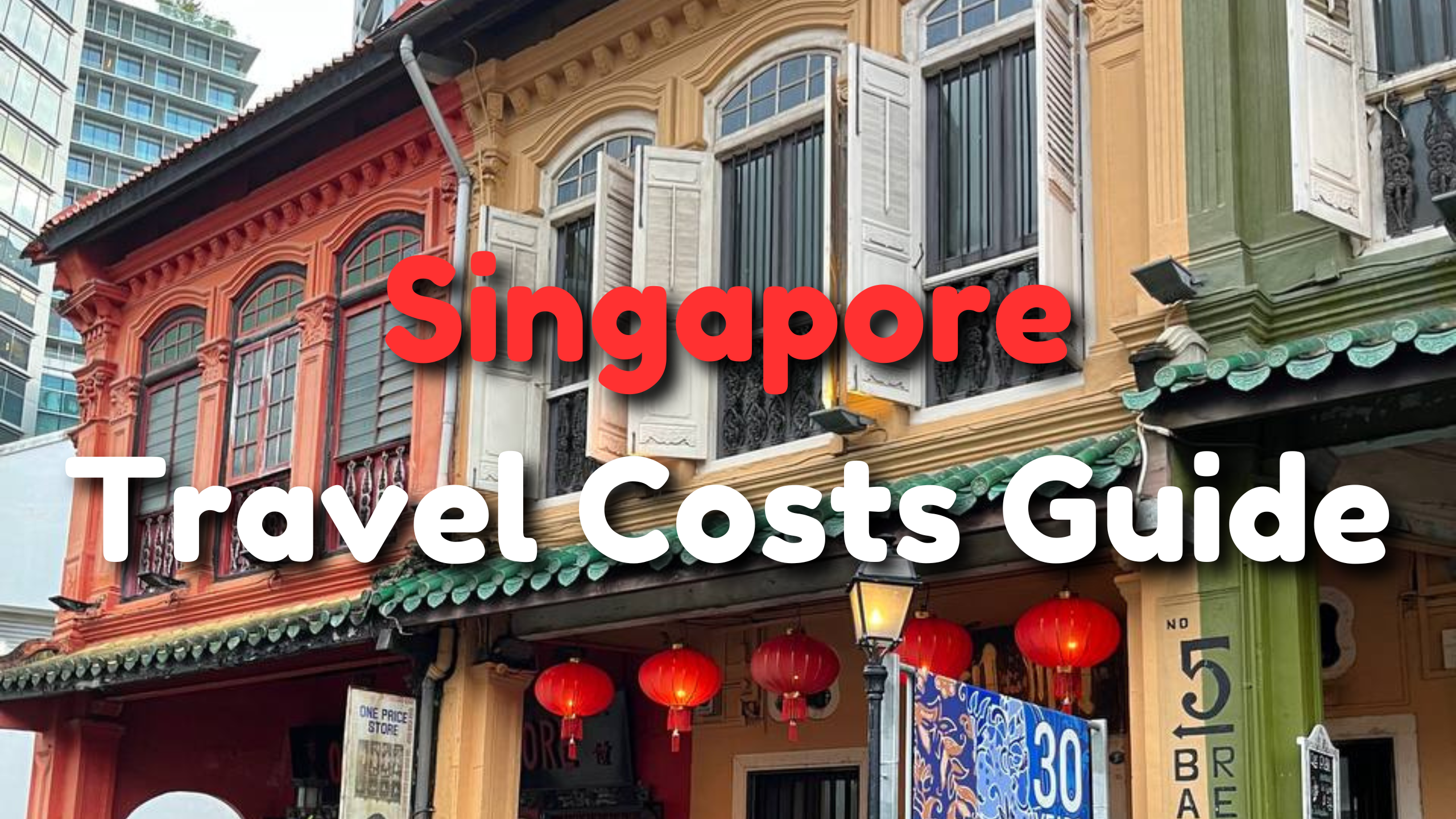
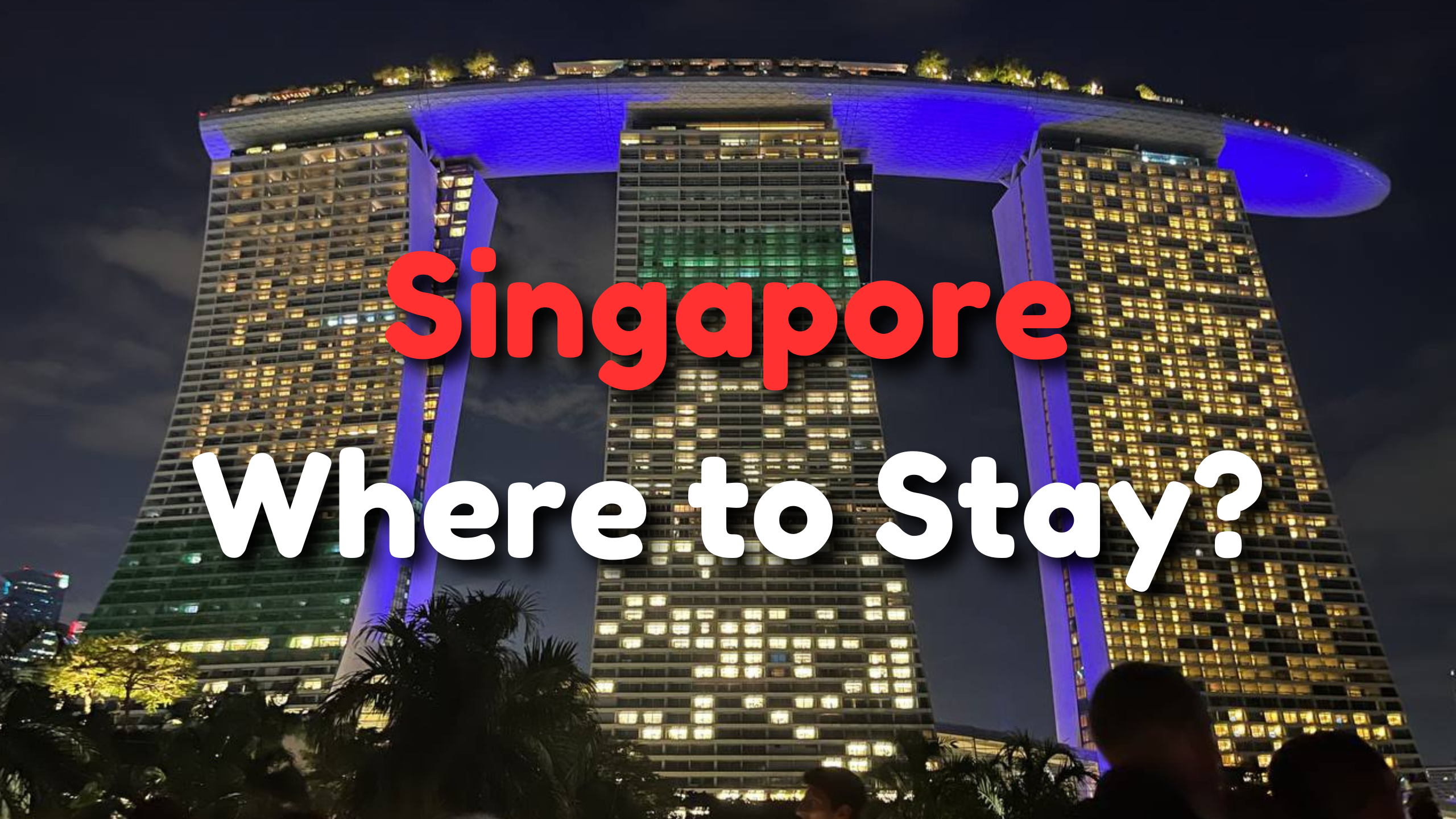
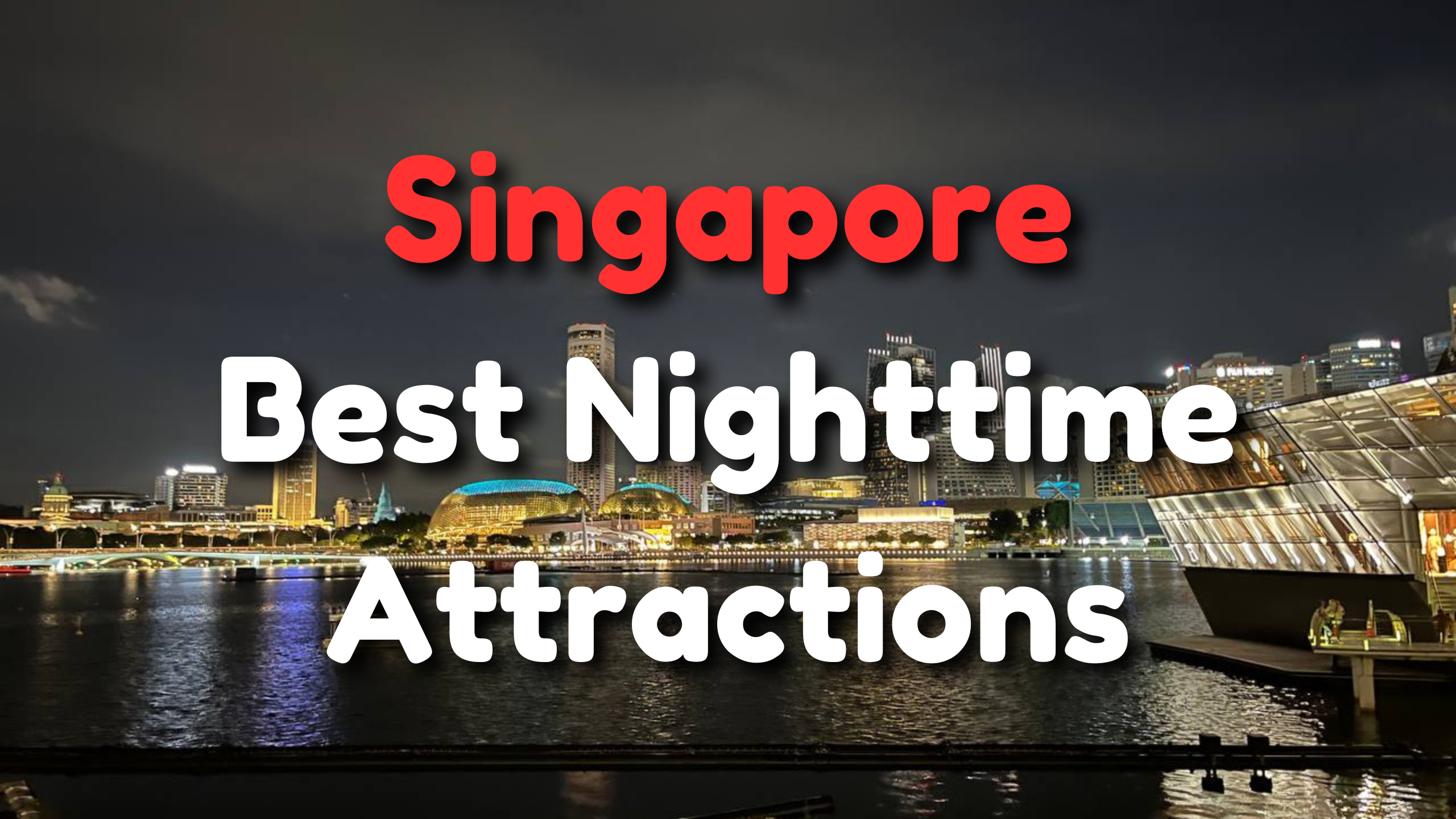



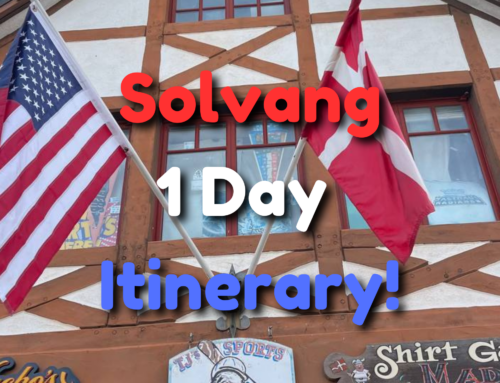
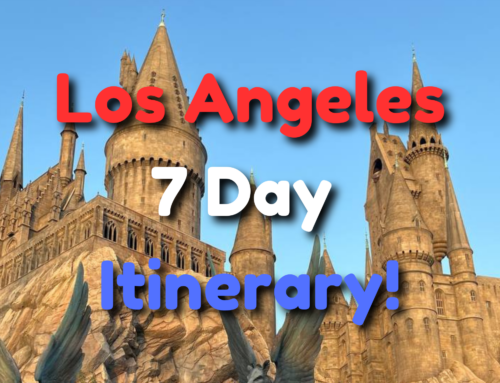
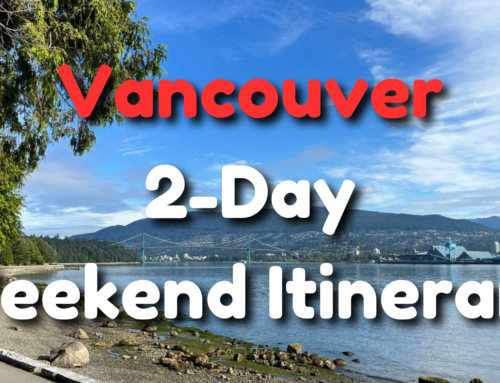
Leave A Comment